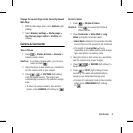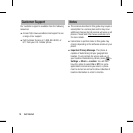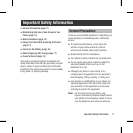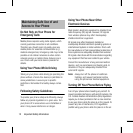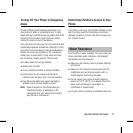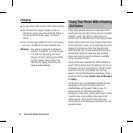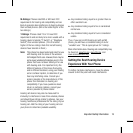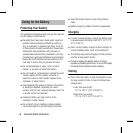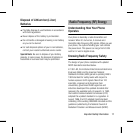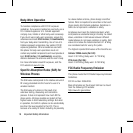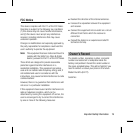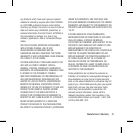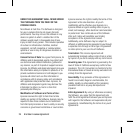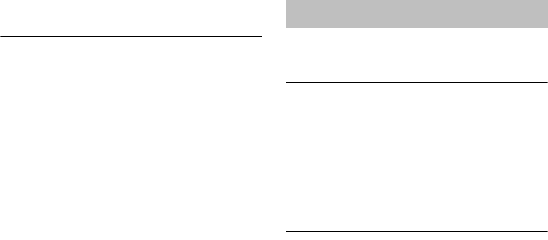
Important Safety Information 17
Disposal of Lithium Ion (Li-Ion)
Batteries
Ɣ Promptly dispose of used batteries in accordance
with local regulations.
Ɣ Never dispose of the battery by incineration.
Ɣ Do not handle a damaged or leaking Li-Ion battery
as you can be burned.
Ɣ For safe disposal options of your Li-Ion batteries,
contact your nearest authorized service center.
Special Note: Be sure to dispose of your battery
properly. In some areas, the disposal of batteries in
household or business trash may be prohibited.
Understanding How Your Phone
Operates
Your phone is basically a radio transmitter and
receiver. When it’s turned on, it receives and
transmits radio frequency (RF) signals. When you use
your phone, the system handling your call controls
the power level. This power can range from 0.006
watt to 0.2 watt in digital mode.
Knowing Radio Frequency Safety
The design of your phone complies with updated
NCRP standards described below.
In 1991–92, the Institute of Electrical and Electronics
Engineers (IEEE) and the American National
Standards Institute (ANSI) joined in updating ANSI’s
1982 standard for safety levels with respect to
human exposure to RF signals. More than 120
scientists, engineers and physicians from
universities, government health agencies and
industries developed this updated standard after
reviewing the available body of research. In 1993,
the Federal Communications Commission (FCC)
adopted this updated standard in a regulation. In
August 1996, the FCC adopted hybrid standard
consisting of the existing ANSI/IEEE standard and the
guidelines published by the National Council of
Radiation Protection and Measurements (NCRP).
Radio Frequency (RF) Energy



